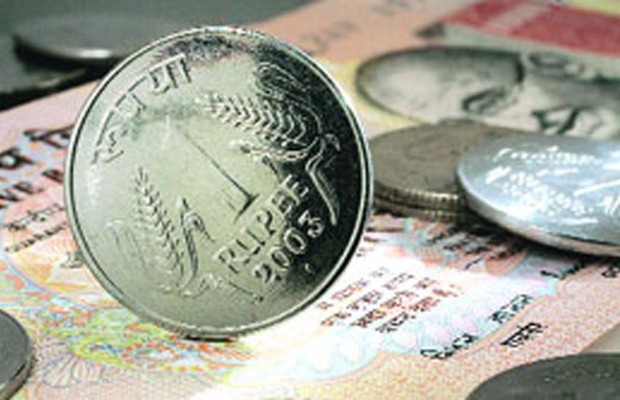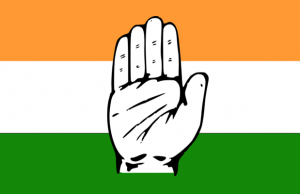COUNTDOWN BEGINS WITH THE NEW YEAR

Food and vegetable prices are rising like never before. The business environment remains cloudy. Domestic savings is at its lowest ebb. Despite falling international crude oil prices, India continues to suffer.
But who cares for the cry of the common people? Prime Minister Narendra Modi has coined a new slogan of “developmental-ism” to lure the voters in Bihar this time. He promises economic growth that the state has never seen. His speeches are similar to the ones he made before last year’s general elections. Modi is carefully avoiding any reference to the issues of price rise, the state of India’s economy and the recent disruptions to social harmony in his speeches.
Even the economic data released by Modi government clearly indicates that if there is no revival of consumer demand, and investment at the earliest, we are in for an increasingly grim economic scenario. There is just no room for complacency. Boasting of the steps taken to put the economy on track is another thing and translating it into numbers is an entirely different matter. If we look at the economic growth figures for the first quarter of 2015-16, we will find that the dreams Modi is trying to sell in Bihar do not match with his track record.
A 7.1 per cent growth rate isn’t something to celebrate. And it’s lower than the 7.4 per cent growth logged in Q1 of 2014-15 when Congress-led UPA government had just lost to the electoral gimmicks cleverly played by Modi and his party. All sectors barring hotel, transport and communication services have performed very poorly against last year’s first quarter. The decline in agriculture during the Modi regime should be a cause for serious concern. Agriculture did better all through 2013-14, and there was an increase every quarter. It has been in decline, quarter on quarter, through 2014-15.
The figures on the core sector released by Modi government tell us that the growth of eight infrastructure industries in April-July this year was a mere 2.1 percent against 5.5 per cent in April-July last year. Growth was near-stagnant in July; the 1.1 per cent growth that the month saw was a steady decline from 4.4 per cent in May and 3 percent in June. The data shows that the government has already run up a fiscal deficit that is close to 70 per cent of the budget target. It was 61 per cent in April-July last year. Total expenditure was 33.8 per cent of the budget target of 28.1 percent last year.
Economic experts are expressing serious concerns about the economy under the Modi regime. They feel that unless the increasing fall in domestic savings is controlled effectively, the economic growth rate cannot be improved. Domestic investment holds a direct link to domestic savings and the economy of any country primarily depends on its domestic investment and not on foreign investment. According to World Bank data, India’s domestic savings in the percentage of its GDP is now only 29. It was 32.2 in the year 2010. In China, it is little more than 50 per cent. India’s foreign direct investment inflow to the percentage of its GDP is only 1.7. Depending on foreign investment for the economic health of the country would be a grave mistake.
Modi’s all out efforts in this direction cannot create miracles for the simple reason that the component of foreign investment in proportion to our GDP will take a long time to cross 2 per cent. Thus, relying heavily on “Make in India” might prove to be a wrong strategy in future, and we must make all out efforts to revive sentiments for domestic investments. There’s a clear need to get investments going again. Gross fixed capital formation (GFCF) as a percentage of GDP is an indicator of investment activity. It has declined from 29.2 per cent in Q1 of 2014 to 27.8 per cent in Q1 this year. It is the lowest in the last nine quarters. If it does not make our Prime Minister worrisome than what will? Without getting the investment cycle back on track, the government can never pull up some of the core sectors of industrial activity. Talking about the ease of doing business is easy, but deliverance requires vision and its implementation on the ground.
Consumer demand has also gone down in the past one year. Consumer demand is what will revive the manufacturing sector. The 7.2 per cent growth in manufacturing in Q1 is very unsatisfactory. It is far lower than the 8.4 per cent logged in Q1 last year. The index of industrial production (IIP) for Q1 also showed lower growth this year. Putting the zing back in manufacturing is very important to generate jobs. Modi acquired power only by raising high hopes in the minds of people and promising to fulfill them. The single biggest challenge before the government today is employment generation. However, it does not seem easy for Modi to achieve any significant success in this area by the end of his tenure in 2019 keeping in view the projections of economic growth based on the current situation. The World Bank’s global economic prospects suggest that India will reach to around 8 per cent of growth rate in 2019 whereas under the Congress rule in 2010, the growth rate was 10.2 per cent.
Serious attention needs to be given to agriculture also by rain-proofing it. Unfortunately, increasing productivity and profitability in agriculture is not on the priority list of the Modi government. Instead of knee-jerk reactions to suicides by farmers by changing names of ministries, the government needs to get down to implementing the laundry list of agriculture reforms.
To use social polarisation as a means to achieve electoral gains is counterproductive for economic growth. Any party that comes to power by making tall promises and then fails to deliver any results is bound to pack its bags. Time is a luxury the Modi government does not have. Irrespective of the Bihar poll results, the countdown in the public mind for the Modi-led central government will begin after the winter session of the Parliament.




You must be logged in to post a comment Login